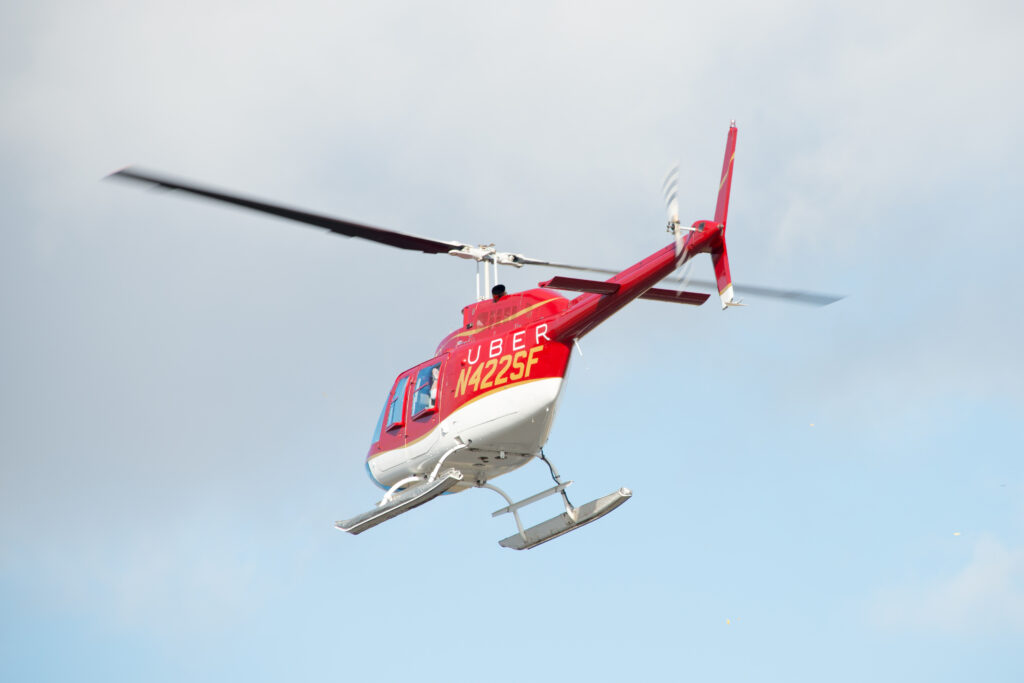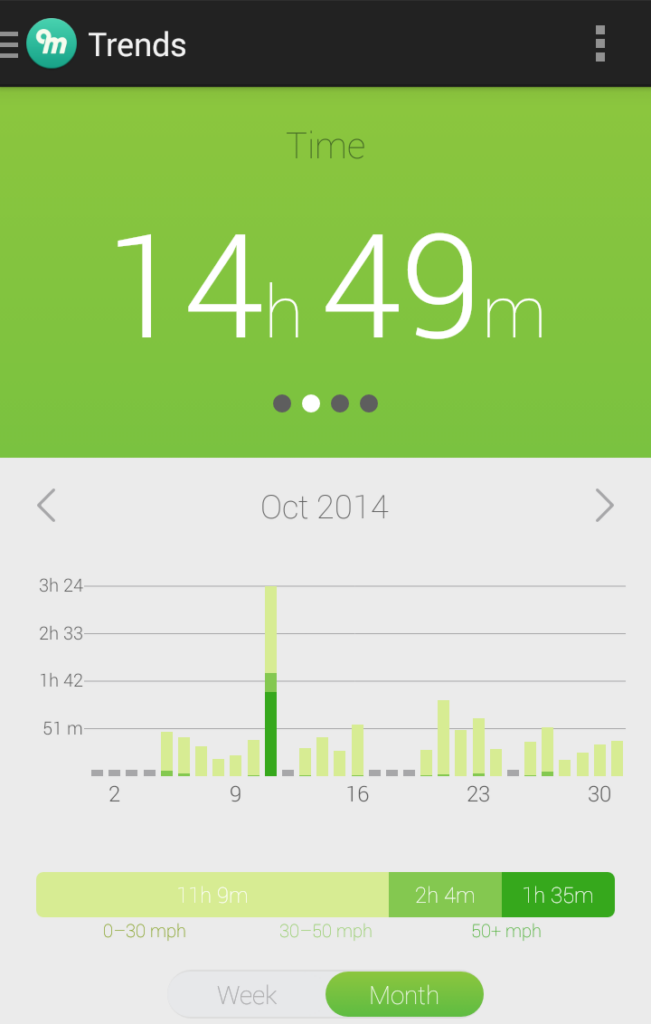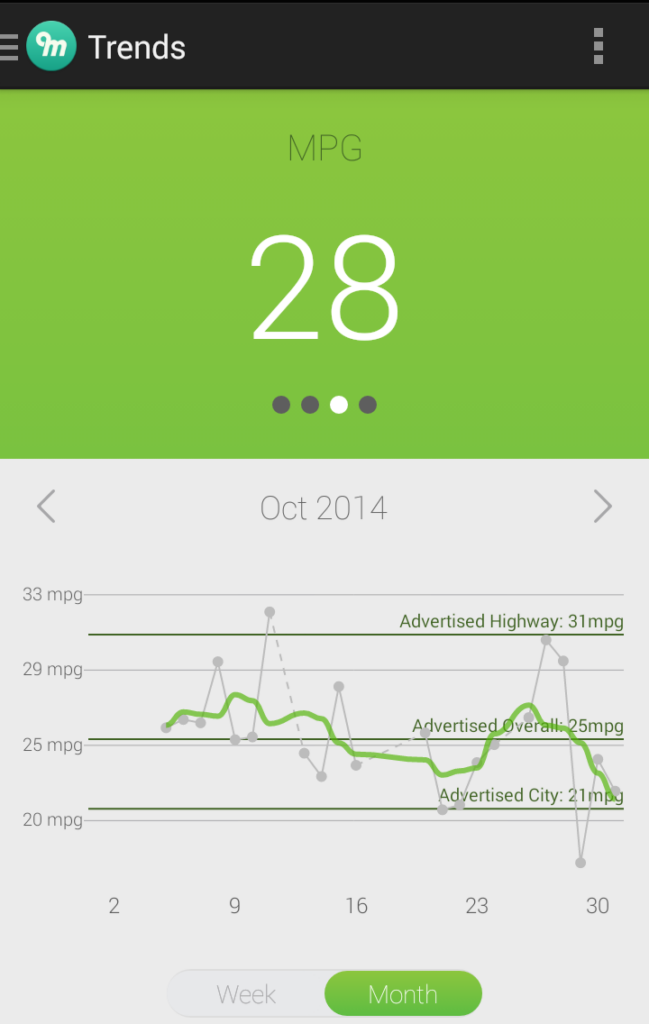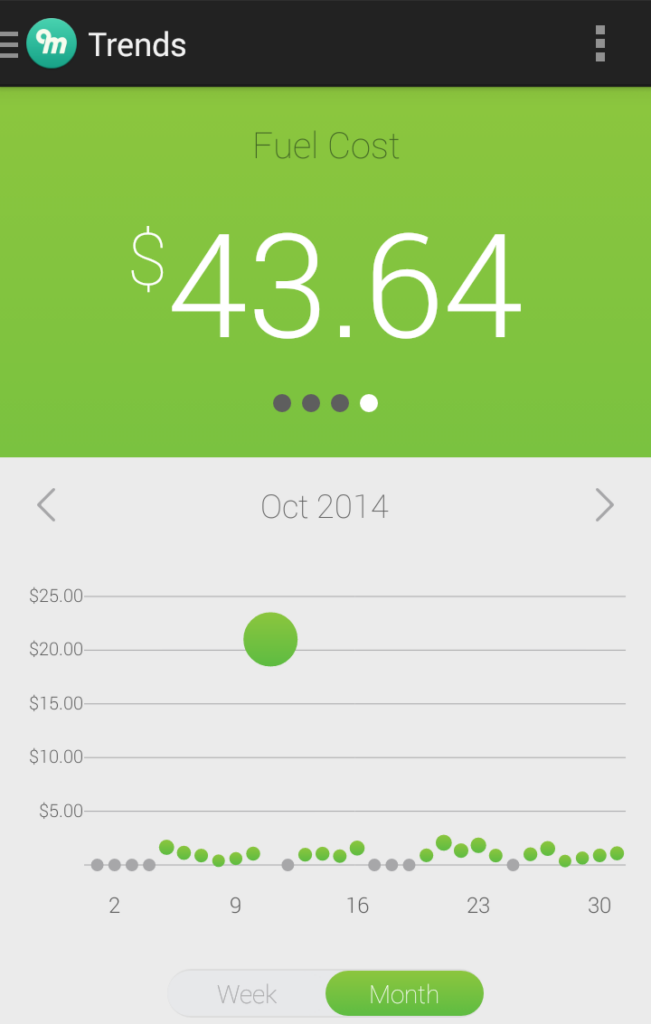
The Bay Area doesn’t have a traditionally great reputation when it comes to transportation options. Innovation is fixing that.
I love hearing Elon Musk talk. He gets right to the point and tells people what they want to hear. His presentations have showmanship without verbal fluff. The official recording of a huge announcement for the Model S: the all-wheel drive and Autopilot, is shorter than 15 minutes. Here it is:
The live presentation was slightly longer. When Elon started to talk about Autopilot, the car being held by a robot for the dual-motor display was obscuring the audience’s view of the presentation, so there was a minute or so of the robot going through what I assume was a pre-programmed sequence to show off and then lower the car. Elon laughed it off with a simple “Robots.” But anyway, this stuff is so cool. I love technology. Here’s a video of some people trying out the new car:
I suppose now would be a good time to disclose that I own some Tesla stock, but as you’ve hopefully gathered from my multiple other posts about electric cars and autonomous cars, that’s definitely not why I’m writing about this.
Anyway, speaking of electric cars, I’ve been starting to see the BMW i3 around a little more recently. I caught a quick shot of one while driving in Mountain View the other day:

It’s fun to see a production car that looks like it’s from the future.
Add a gadget to the mix, and I’ll even get excited about car insurance. For the past few months, I’ve been driving around with a Metronome (from Metromile) in my car. It’s a little device that plugs into the diagnostic port, which in my case is in the area above where my left leg rests when I’m driving. It then tracks stuff about your car: how fuel efficient it is, how much you drive, where and when you drive, and if there are any diagnostic codes that need your (or your mechanic’s) attention. All of this information is displayed in a web interface or a mobile app. It’s free.
It’s so easy to use. Installing it takes about 10 seconds; you just plug it in. It’s already connected to your account when they ship it to you, so there’s no awkward pairing process. It’s ready to go out of the box. You don’t even need to connect it to your phone, as it comes with its own cellular radio. I’m not sure which network it’s on, but it doesn’t matter because the service is free too.
I like it. I used to leave a Garmin GTU 10 in my car so I’d know where it was, but that got bricked a few years ago during a software update and I never replaced it. When I’m on vacation, I’ll check the Metromile app just to make sure that my car is where I left it. I also get cool stats. Someone who was considering buying a car asked me how much I spend on gas per month. In the past, this is something that I would struggle to answer. But I was able to open up the Metromile app and tell him that in August I used $33.37 worth of gas and in September $28.81. And I now know that in October, I spent a whopping $43.64 due to a $20 trip to Petaluma. I assume that the app estimates this based on the amount of fuel I use and local gas prices. It’s not connected to my bank account, and I don’t manually enter this data. Normally I’m so disconnected from the cost of each trip since I pay for it on less than a monthly basis, but having a dollar amount attached to each trip makes me realize how expensive owning a (gas-powered) car really is. Here’s what October looked like for me:




Now of course with the free device there has to be an upsell. Currently, in some states they offer per-mile insurance. If you don’t drive a lot, this can work in your favor. It turns out it works in my favor. I used to pay about $80/month for Esurance. With Metromile I have had monthly statements of about $50-55, and that’s with higher coverage levels than I had with Esurance. As with other companies, you can get your ID card within the app, but I keep paper copies with me because handing over an unlocked phone to anyone makes me uncomfortable.
Signing up for the insurance was relatively easy, but I did run into a couple of bugs. First, I got an error when I was signing up that wouldn’t let me proceed after I entered all of my information. I emailed them after hours, and the next morning they left me a voicemail with a direct callback number to an agent. I was actually able to get it to work that next day after manually typing in my VIN (that was the only difference I could think of), but I called back anyway to let them know that all was good. The agent was really nice, and knew exactly who I was when I mentioned why I was calling. The second bug I ran into was that when my account switched over to a paid account, it hid all of my data from the time before my policy started. The agent told me that they were aware of the issue, but it looks like it’s still not fixed on the web interface. I can get older data on the app, however.
One criticism I still have is that as far as I can see, there’s no chart of how much the insurance is costing me per trip. While they’re eager to point out how much the gas is costing me, they don’t call out how much they cost. Another nitpick is that the data isn’t always super-fresh (the most recent trip is often missing), but I’m guessing that’s because I usually park in an underground garage that has weak cell coverage.
If you want to try the Metronome yourself, you can order one on their website. Using the “Free App Beta” option should bypass any insurance quote stuff. It looks like they’re currently only sending devices to California, Oregon, Washington, and Illinois, but you can sign up even if you’re in another state. I’m not sure if any of this works outside of the US; I’d imagine that would be difficult due to there being different cell carriers.
On recent weekends, I’ve been playing around with my blog. I’m not an engineer, so working on my site is a time when I get to try my hand at basic coding. One thing that most of you have probably noticed is that my blog was returning the incorrect value for the datetime attribute on posts. I apologize for any inconvenience that this has caused my readers. Specifically, my site was displaying the PDT time as if it were UTC. On my previous post, you would see something like this:
<time class="entry-date" datetime="2014-10-31T22:01:56+00:00">October 31, 2014 10:01 pm</time>
Weird, huh? Doesn’t that indicate that it was posted at 3 PM in California? After reading how to format the date and time, I ended up manually creating what I think ‘c’ should return by doing this in my functions.php file:
esc_attr( get_the_date( 'Y-m-d\TH:i:sT' ) )
That seemed to do the trick. Now that same post looks like this:
<time class="entry-date" datetime="2014-10-31T22:01:56PDT">October 31, 2014 at 10:01 pm</time>
For comprehensiveness, here’s what I currently have. It might be helpful for someone else or for me to refer to later. I’ve certainly benefited from others sharing their code. And yeah, I know that I’m calling stuff that I’m not using but I didn’t want to change the numbers around:
// Set up and print post meta information. printf( '<span class="entry-date"><a href="%1$s" rel="bookmark"><time class="entry-date" datetime="%7$s">%3$s at %6$s</time></a></span> <span class="byline"><span class="author vcard">By <a class="url fn n" href="/about/" rel="author">%5$s</a></span></span>', esc_url( get_permalink() ), esc_attr( get_the_date( 'c' ) ), esc_html( get_the_date() ), esc_url( get_author_posts_url( get_the_author_meta( 'ID' ) ) ), get_the_author(), esc_html( get_the_time() ), esc_attr( get_the_date( 'Y-m-d\TH:i:sT' ) ) // Did this because using c as per the template default was returning the local time without correctly specifying the offset or timezone, so I did the formatting manually after reading http://codex.wordpress.org/Formatting_Date_and_Time );
Let me know in the comments if I was misinterpreting the old behavior as a bug.
Update on February 22nd, 2015: The Twenty Fifteen theme uses a function called twentyfifteen_entry_meta. To get this to work, copy that function from /wp-content/themes/twentyfifteen/inc/template-tags.php over to functions.php in your child theme. Then replace any parameter set to ‘c’ to ‘Y-m-d\TH:i:sT’ instead.
10 years ago today, I gave in to peer pressure and registered for Facebook. While it was still on thefacebook.com at the time, many people had already dropped the “The” when referring to it. My confirmation email is below. I love how simple it is. The subject line doesn’t even mention the name of the service. I wonder what it looks like when you register today.
from: thefacebook.com <register@thefacebook.com>
date: Thu, Oct 28, 2004 at 2:08 PM
subject: confirmation emailMichael Wyszomierski,
You are receiving this email because you just registered at thefacebook.com. To complete your registration, please follow the link printed below:
http://jhu.thefacebook.com/confirmation.php?id=5403365&code=630828304
Thanks!
thefacebook.com team
To orient you in the Internet timeline, I had signed up for both Gmail and Flickr during the previous month. 2004 was a big year.
Finding the locations of photos on Street View.
Beah recently did a talk at Walnut St. Labs in Pennsylvania about what she’s learned in her career, and I enjoyed watching it tonight during dinner. One of the things that I remember from when Beah first joined Google is that she actually had, I believe, three job descriptions, plus she was asked to learn Thai. I’ll be talking more about how inspirational Beah is in an upcoming post.
I’ve watched this video many times today. I’m super-excited about this project even though I don’t work on it at all. My favorite part of the video might not be what you guess, though. It starts at about 1:43, when the vehicle accelerates. It’s currently the thumbnail for the video on YouTube.
I was recently asked what students today should be learning. One of my responses was that given that they have access to an unprecedented amount of information from an unprecedented number of sources, they should learn how to do research with noisy data. The idea is to give students the benefits of access (no arbitrary “Don’t trust anything you read on Wikipedia!” rules) by giving them the skills to read those citations and evaluate credibility.
This is not a new skill. Even in a well-curated library, one should check cited sources, and understand that just because someone wrote it in a book, that doesn’t mean that it’s true. Mistakes happen, misunderstanding happen, memories aren’t always accurate, and people lie. However, there’s a barrier to entry when it comes to getting something published in a book in a library. On the Internet, there’s not much of a barrier to getting something published. I’m doing it right now from my couch, writing whatever I want with confidence, without any verifiable credentials, and without an editor. And for whatever reason, you’re still reading.
Of course, the ease of publishing information online is awesome. We can get information from sources around the world who might never bother to get a book published. We can hear directly from primary sources as they publish blog posts and tweets.
Ok, now that I’ve stated what is probably obvious to most people who are reading this, here’s a story from yesterday. I saw a tweet that included a photograph with the caption “A Single Drop of Seawater, Magnified 25 Times” along with a link to this page, which contains the photo in the tweet.
I raised an eyebrow. Not being a biologist, I could have believed that all of those creatures lived in a single drop of water. But, I have seen many drops of water in my life, and I was pretty sure that I could fit more than 25 of them in the space of that image. I got curious. At first, I thought that maybe just the number was off. Maybe it was a single drop of water magnified 250 times. Let me retrace my steps and show you what I found.
The first cited source, Colossal, doesn’t look bad. The author credits and links to the photographer, there’s a link to something that he spotted in the image (whatever a diatom is), and he helpfully credits his source with a “via” link to another page on a site called Lost At E Minor. Off to LAEM I went. That page also uses the “25 times” number, but describes the image as a “splash” and “bucket” of seawater. Not a drop. Interesting. So just how much water is it? The “via” link on Lost At E Minor goes directly to the website of the photographer, David Liittschwager. I was pretty close to my eventual answer at that point, but I got off track a bit visiting a bunch of other sites where the photo had been shared. After searching for [David Liittschwager seawater], however, I quickly found that the image had appeared in National Geographic, a reputable source. The first page that I landed on mentioned a “dipperful of seawater,” but I wasn’t sure if that was referring to the exact image on the page, as it was part of a series of photos. When I got to the second picture in the series, the image in question, I again saw the quantity described as a “splash,” and a helpful note that the crab larva is “the size of a rice grain.” I was pretty much set at that point. A small rice grain can fit in a large drop of water, but the crab only takes up a small portion of the picture. This is bigger than a drop. Upon revising David’s site, I found a link to “Marine Microfauna,” but the page was hosted on .Mac, which has been shut down. Archive.org’s WayBack Machine came to the rescue and I was able to navigate to this page which captions the photos with “contents of one dip of a hand net.” So so there you are. All of the creatures in the photograph fit in one hand net. Is it at 25x magnification? I don’t know. The crab is supposed to be the size of a grain of rice. I’m relatively new to rice, but that looks about right to me.
Should you research every single statement you see in a tweet? I don’t think so. It doesn’t really matter if that’s a picture of a drop of water or a bucketful; the point is there’s a lot of life in the sea. But if you ever get really curious about something, dig deeper.
I mentioned evaluating credibility at the beginning of this post, and I’m ending it with a quick one-minute tip from Dan Russell on one feature you can use to evaluate credibility online.